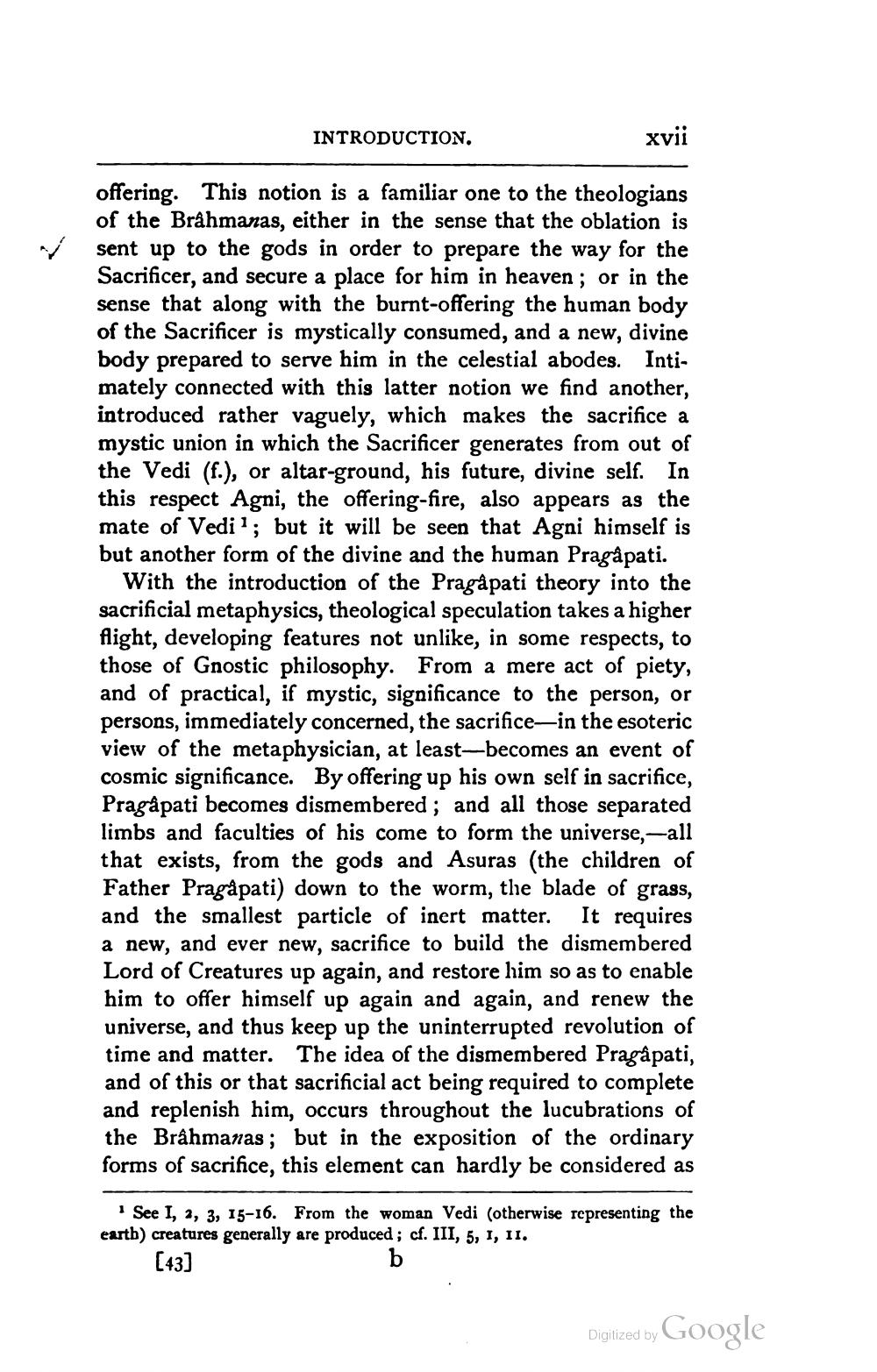________________
INTRODUCTION,
xvii
offering. This notion is a familiar one to the theologians of the Brahmanas, either in the sense that the oblation is sent up to the gods in order to prepare the way for the Sacrificer, and secure a place for him in heaven; or in the sense that along with the burnt-offering the human body of the Sacrificer is mystically consumed, and a new, divine body prepared to serve him in the celestial abodes. Intimately connected with this latter notion we find another, introduced rather vaguely, which makes the sacrifice a mystic union in which the Sacrificer generates from out of the Vedi (f.), or altar-ground, his future, divine self. In this respect Agni, the offering-fire, also appears as the mate of Vedi"; but it will be seen that Agni himself is but another form of the divine and the human Pragàpati.
With the introduction of the Pragapati theory into the sacrificial metaphysics, theological speculation takes a higher Alight, developing features not unlike, in some respects, to those of Gnostic philosophy. From a mere act of piety, and of practical, if mystic, significance to the person, or persons, immediately concerned, the sacrifice in the esoteric view of the metaphysician, at least-becomes an event of cosmic significance. By offering up his own self in sacrifice, Pragåpati becomes dismembered ; and all those separated limbs and faculties of his come to form the universe,-all that exists, from the gods and Asuras (the children of Father Pragåpati) down to the worm, the blade of grass, and the smallest particle of inert matter. It requires a new, and ever new, sacrifice to build the dismembered Lord of Creatures up again, and restore him so as to enable him to offer himself up again and again, and renew the universe, and thus keep up the uninterrupted revolution of time and matter. The idea of the dismembered Pragapati, and of this or that sacrificial act being required to complete and replenish him, occurs throughout the lucubrations of the Brâhmanas; but in the exposition of the ordinary forms of sacrifice, this element can hardly be considered as
See 1, 2, 3, 15-16. From the woman Vedi (otherwise representing the eartb) creatures generally are produced ; cf. III, 5, 1, II.
[43]
Digilized by Google




